In January of this year, the New York Times published an interview with writer/director/actor John Krasinski in which they covered the remarkable critical and financial success of his film, A Quiet Place. Among the dozens of great quotes and responses layered throughout the piece, there was one anecdote that stood out above all the others. Krasinski recounted a tale from his thirtieth birthday party, where he spoke to writer/director Paul Thomas Anderson about a film he felt was not very good. To Krasinski’s derogatory comments, Anderson offered an incredibly wonderful response;
“‘Don’t say that. Don’t say that it’s not a good movie. If it wasn’t for you, that’s fine, but in our business, we’ve all got to support each other.’ The movie was very artsy, and he said, ‘You’ve got to support the big swing.’”
There are few filmmakers in the history of cinema whose filmographies are full of as many and as varied ‘big swings’ as Robert Rodriguez’s. Cutting his teeth on exceedingly low-budget indie flicks in which he essentially served as his own one-man wrecking crew, writing, producing, cinematographing, directing, scoring, editing, and even hand-drawing concept art for his own films in cult classics like El Mariachi and Desperado.
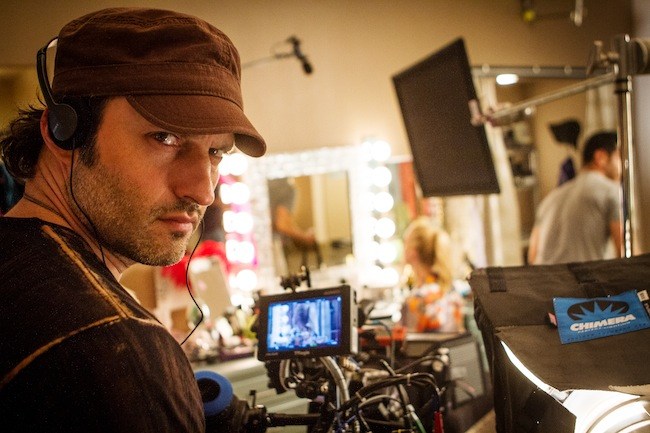
But at the drop of a hat, he could (and did) move from these minimalist hard-R-rated blasts of visceral adrenaline to delightful, kid-friendly projects like the Spy Kids trilogy. He mixed-and-mashed genres, ratings, and aesthetics together to create projects that felt entirely his own and continued to take big steps towards (at the very least) attempting to innovate the cinematic form as he did so. With Spy Kids 3-D: Game Over and The Adventures of Sharkboy and Lavagirl, he brought 3-D back to cinemas a full half-a-decade before James Cameron’s Avatar would repopulariuze it. With Sin City, (a hard-R-rated comic book adaptation he dropped in the middle of making those last two children’s films) he revolutionized what it meant to visually translate a comic book panel to the silver screen. And with Once Upon a Time in Mexico, He became one of the very first filmmakers to convert to digital cinematography after George Lucas and co. pioneered the technology with Attack of the Clones, saying at the time;
“It was that same sort of close-minded, ‘we’re going to wait ten years to adopt this’. I wasn’t going to wait that long. I said, ‘I’m following Obi-Wan. Obi-Wan knows what he’s talking about.’ He knows what time it is. He always does. I can tell that this is going to be the beginning of something big and I want to be there for that.”
With all of this in mind, Rodriguez’s latest film plays like something of a culmination of his decades-spanning career. With Alita: Battle Angel, Rodriguez has taken the biggest swing of his career and it is absolutely fascinating to bear witness to.
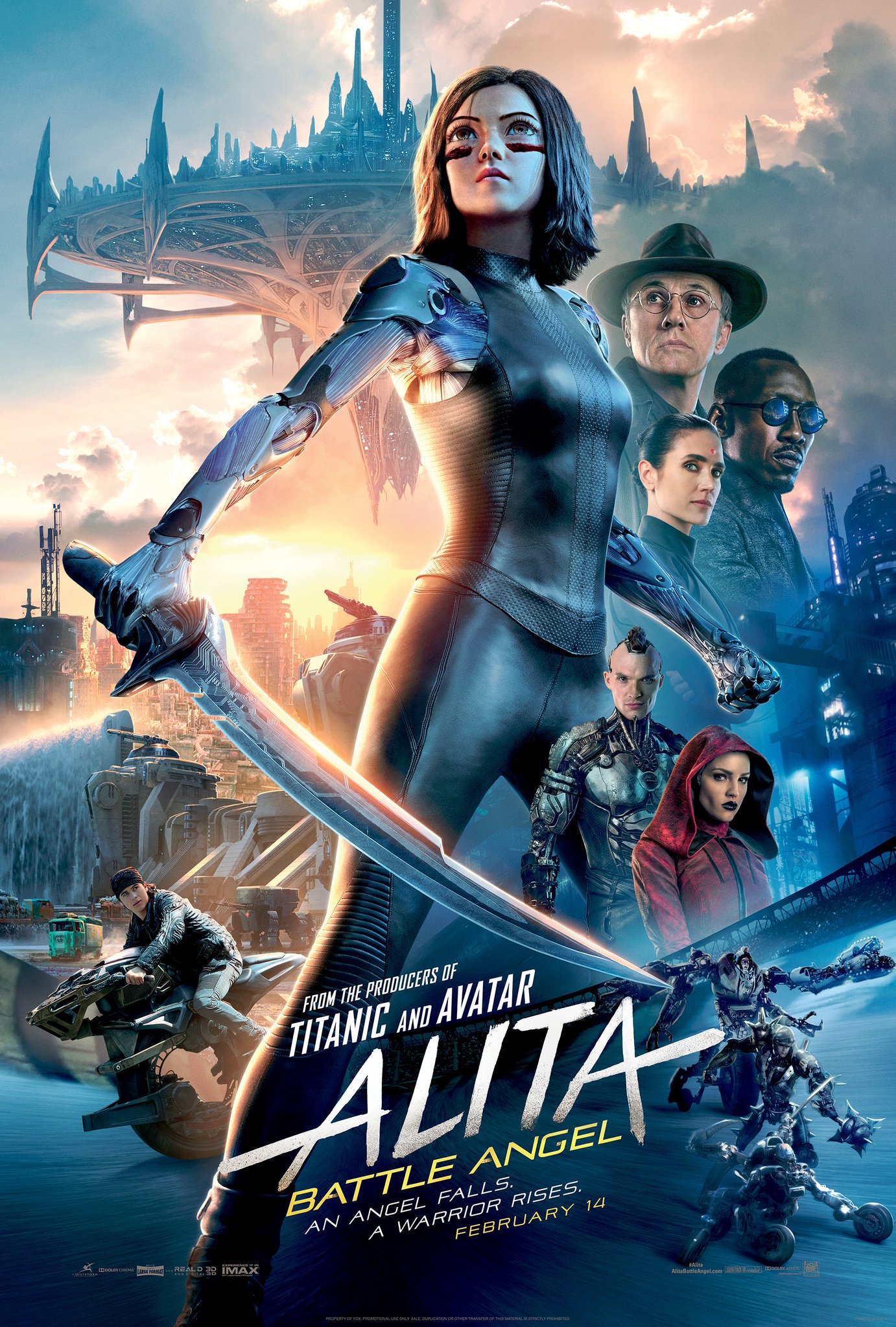
A live-action adaptation of Yukito Kishiro’s manga, originally entitled Gunnm, this film has been on a journey to the big screen for well over three decades now. Originally, fellow Hollywood innovator James Cameron became interested in crafting a big-screen adaptation in the ‘90s. Ultimately, he penned a script for the film and continued to push it through various stages of preproduction but put the project on the backburner, instead opting to focus on what would become Avatar. Until just a few years ago, when Cameron brought Rodriguez onboard to make the film a reality.
Between it being an adaptation of pre-existing material, Cameron’s very creatively hands-on involvement with the project over the course of decades, the budget being more than double the size of anything Rodriguez had ever worked on before, and the sheer number of hands the film passed through thanks to the extensive CGI work it necessitated, one would not be wrong in assuming beforehand that the finished product would most likely feel less distinctly like a Robert Rodriguez film. And yet, the exact opposite is actually true; it is arguably one of Rodriguez’s most distinct works.
In many ways, it feels like Rodriguez reclaiming and weaponizing his eclectic legacy as a filmmaker. He uses the kinetic energy and suspense-driven tension of his early days to bring the action setpieces to vibrant and pulse-pounding life, but he also uses the tenderness and whimsy of his children’s films to bring a real sense of pathos and heart to the proceedings. The end result is a film that is a mix of so many genres (western, samurai, science fiction, romance, coming-of-age) that it feels as though any other director would have practically suffocated in the thick of it all. But it is here that Rodriguez positively soars.
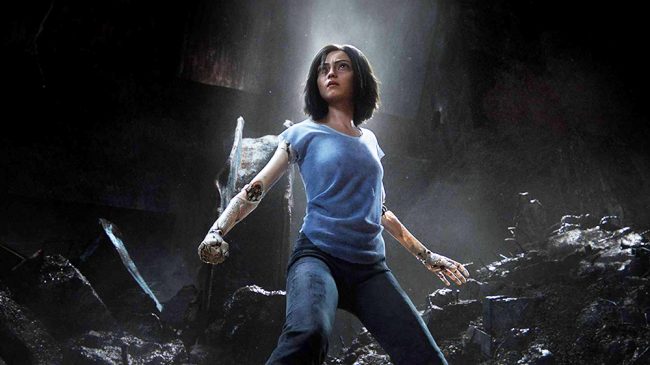
Thanks to some absolutely incredible set designs and phenomenal effects work by Weta, Iron City becomes an immersive and tangible environment in which Rodriguez’s imagination gets to run wild. Thus, we get cutaways of mechanically-limbed musicians playing multi-neck guitars and full-realized vendors in the background. In this world without guns, we get a cast of characters who utilize increasingly ridiculous and over-the-top weaponry that the film has an absolute blast showing off. And Rodriguez’s ecstatic joy at bringing all of this to life in glorious IMAX 3D positively oozes off the screen.
But far and away the biggest winner in terms of Rodriguez’s uniquely suited talents for this film is Alita herself. In Rosa Salazar’s Alita, Rodriguez and co. have crafted the most believably earnest and genuine protagonist this side of the Paddington franchise. The dystopian sci-fi genre has been overstuffed in the last few decades with world-weary protagonists being dragged into adventures they don’t particularly want to go on, which is what makes Alita such a breath of fresh air.
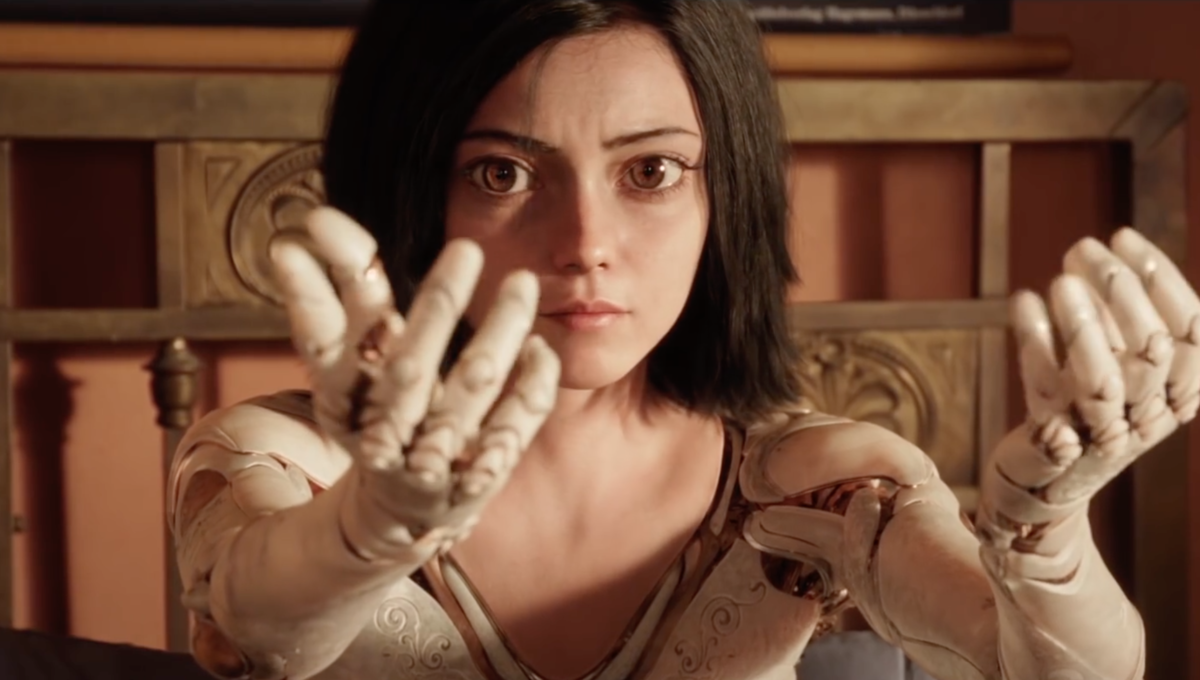
From the moment she awakes in the film’s first minutes, she loves exploring this world. A stand-out scene from the first act sees her running around Iron City with her surrogate father, Dr. Ido, joyfully asking all kinds of questions about their surroundings. In a lesser film, this could have very easily just been an exposition dump expressly for the audience. But here, Rodriguez and co. imbue Alita with this child-like wonder and awe and turn this into an introspective character moment instead. We the audience are learning about the fictional world and its rules, but we’re learning about it through Alita’s reactions to it, which makes all the difference in the world.
It’s this same wondrous characterization that makes so much of the film work so well. As incredible as the effects are, you don’t buy into the world and the narrative because of them. You buy into all of it because of Alita. As George Lucas once famously said;
“A special effect is a tool, a means of telling a story. A special effect without a story is a pretty boring thing.”
And Rodriguez pretty obviously took this to heart. Rarely does a film give viewers as perfect of an analogy for itself as Alita: Battle Angel does, with the reveal that Alita’s heart is a piece of long-lost technology, powerful enough to run the entire city for years. Similarly, Alita herself is the beating heart of this film. Salazar’s performance perfectly utilizes the CGI and turns Alita into an endearing real and believable character, one which audiences are bound to fall in love with.
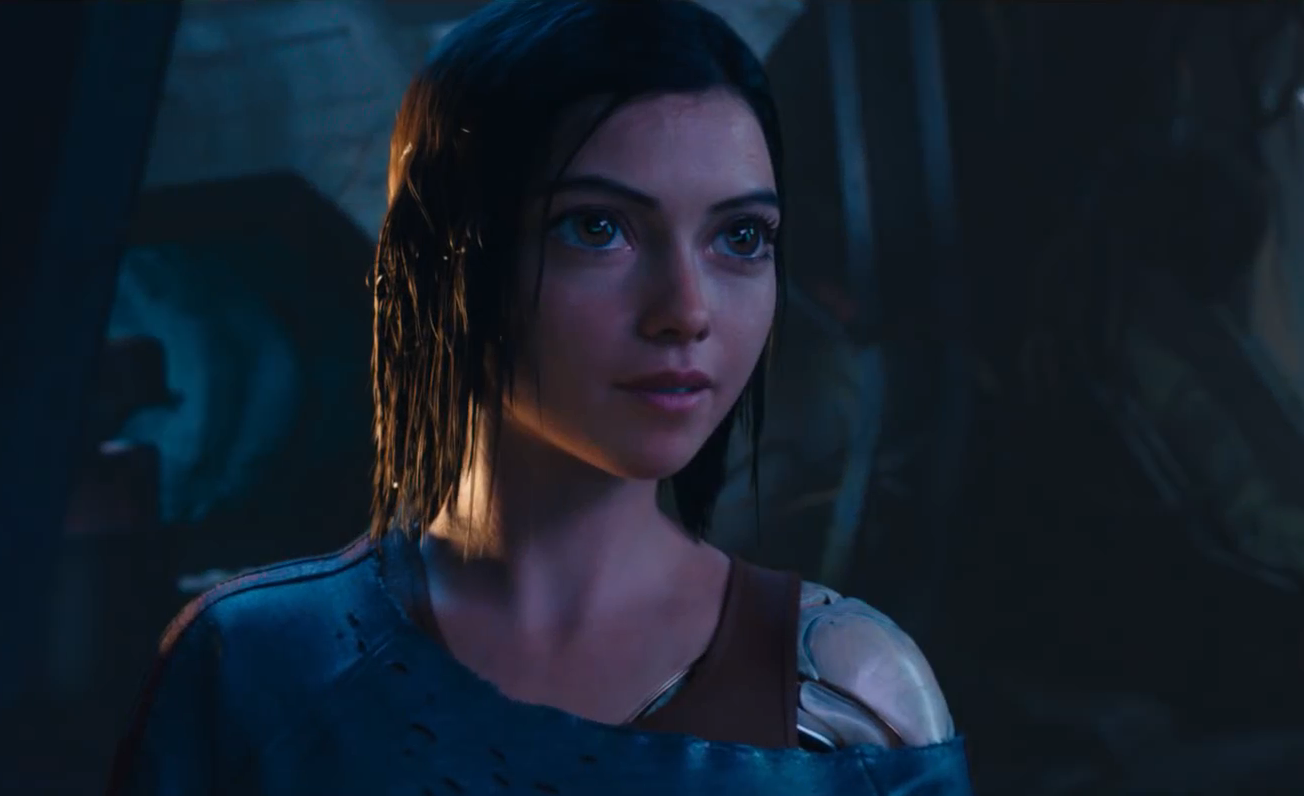
The film is stuffed to brim with dense narrative, essentially layering several different arcs from the source material on top of one another. And yet the film never loses you as a viewer because it keeps you so thoroughly anchored in Salazar’s Alita, consistently carving out moments of introspection and character growth for her that only grow more rewarding upon second and third viewings.
Back in the ‘90s, when James Cameron first began attempting to adapt Yukito Kishiro’s manga, he claimed he was drawn to the material because he was actively looking for characters which he hoped his daughter could one day look up to and that Alita fit the bill perfectly. He said;
“I wanted to make something that would give her something a sense of confidence and empowerment that she could invest in.”
Since then, twenty-some years have passed and Cameron’s daughter has now done what all children inevitably do, no matter how hard we may try to stop them; she has grown up. Similarly, Rodriguez’s daughters and sons, the sole audience for whom he was making films like Spy Kids and The Adventures of Sharkboy and Lavagirl have followed suit. And you can feel this in Alita: Battle Angel.
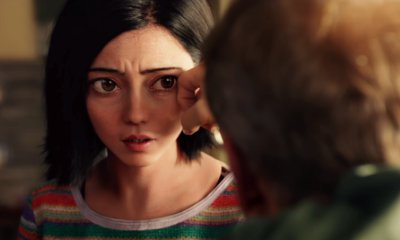
It is the tale of a girl growing up and finding her place in the world. And during that process, her father figure has to come to terms with the fact that he cannot hold on to or keep her shielded away from the world forever, that she must be set free in order to become the hero and inspiration she was always destined to be.
It may seem goofy and a bit ill-advised at times, especially in relation to how it visually depicts Alita’s body and metamorphosis from girl to woman, but of course it is. It’s the work of two middle-aged Dads-with-a-capital-D earnestly wearing their hearts on their sleeves.
It’s the biggest swing of all; a $200 million blockbuster that is, at its core, an intensely personal love letter. Over a decade ago, Rodriguez was grappling with all of these same elements: making films for an exclusively personally-motivated audience, innovating the cinematic form, following in the footsteps of the giants who inspired him to create in the first place.
And here in 2019, he’s come full circle. Alita: Battle Angel is a big-budget, boundary-pushing, thematically-charged, deeply personal and idiosyncratic epic, the likes of which audiences haven’t really seen on the big-screen since George Lucas’ Star Wars prequels. It makes Rodriguez’s quote from 2002 sound positively prophetic;
“I can tell that this is going to be the beginning of something big and I want to be there for that.”
Indeed, Mr. Rodriguez, you are.